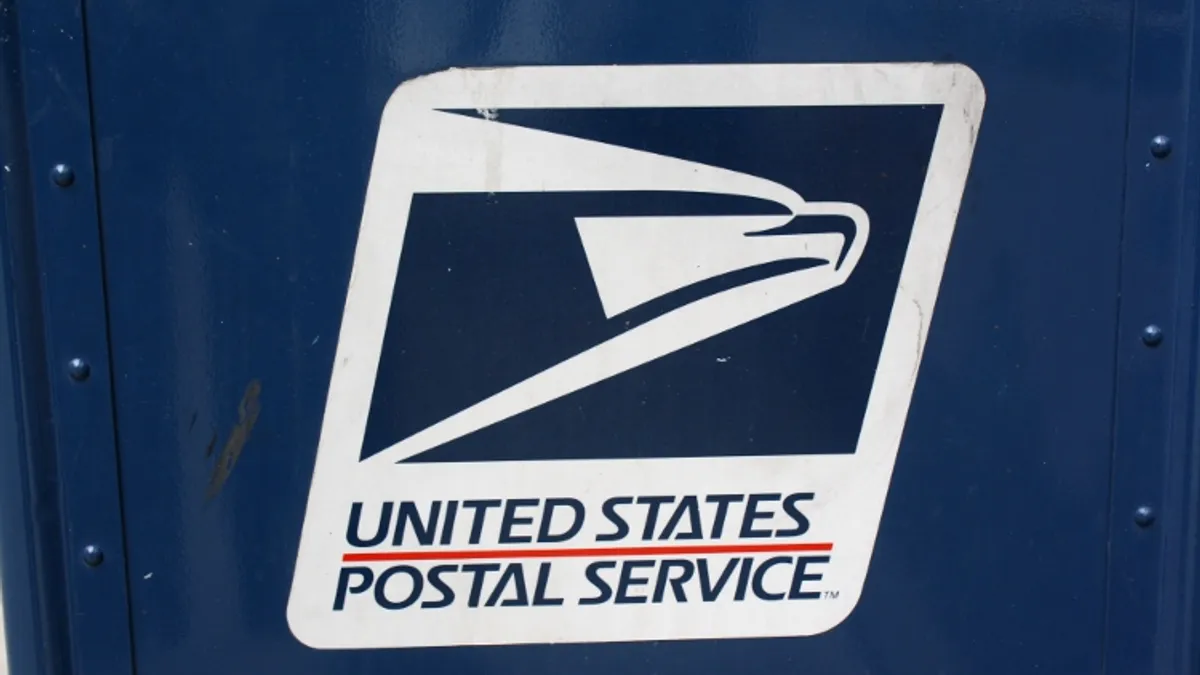Dive Brief:
- The United States Postal Service (USPS) will work with the University of Michigan on an autonomous mail delivery truck, American Shipper reported last week. The USPS intends to introduce a swarm of the small self-driving trucks on rural routes across the country by 2025.
- In one possible scenario, a postal worker would sit behind the wheel, sorting mail and doing other tasks as the truck moves along the established route. Rural areas are first for consideration due to the lower accident rate as a result of less traffic.
- The USPS' Office of the Inspector General (OIG) wrote in a recent report designing autonomous vehicles will add only $7,000 to $10,000 to the purchase price by 2025 and just $3,000 by 2035. However, those cost increases would be offset by savings on fuel.
Dive Insight:
Last mile inefficiencies have long plagued logistics; is an autonomous vehicle serving a government agency likely to solve the problem?
The USPS has the challenging task of stopping house by house, building by building on a never-ending basis. While logistics providers like FedEx and UPS have some distance between stops, the post office bears a greater burden and therefore may benefit most from the implementation of an autonomous vehicle. Though most delivery pundits see trucking as the likely progenitor of road-ready self-drivers, it's entirely possible that the post office will beat them to the punch out of sheer necessity.
The OIG report reveals the USPS is considering three stages to the implementation of autonomous vehicles within its fleet. The first phase is underway, as the University of Michigan is set to deliver a prototype to the USPS by December 2017. In Phase 2, the agency will partner with a manufacturer to pilot autonomous delivery trucks in 10 rural routes. Then, between 2022 and 2025, the USPS plans to deploy autonomous vehicles on 28,000 rural routes.
Yet, challenges remain for the development of autonomous vehicles, despite promises by automakers across three continents. "The industry is still perfecting the foundational pillars of the technology; sensors still have problems seeing through bad weather, for instance," the OIG states in its report.
Nonetheless, the USPS is optimistic about the technology's future. "We see possibilities from each of the seven use cases and the trucking applications outlined that will increase customer satisfaction and cut costs," USPS Vice President of Delivery Operations Kevin McAdams wrote in a letter to the OIG. "We are in agreement of opportunities autonomous vehicles present and have began considering changes with our logistics."












